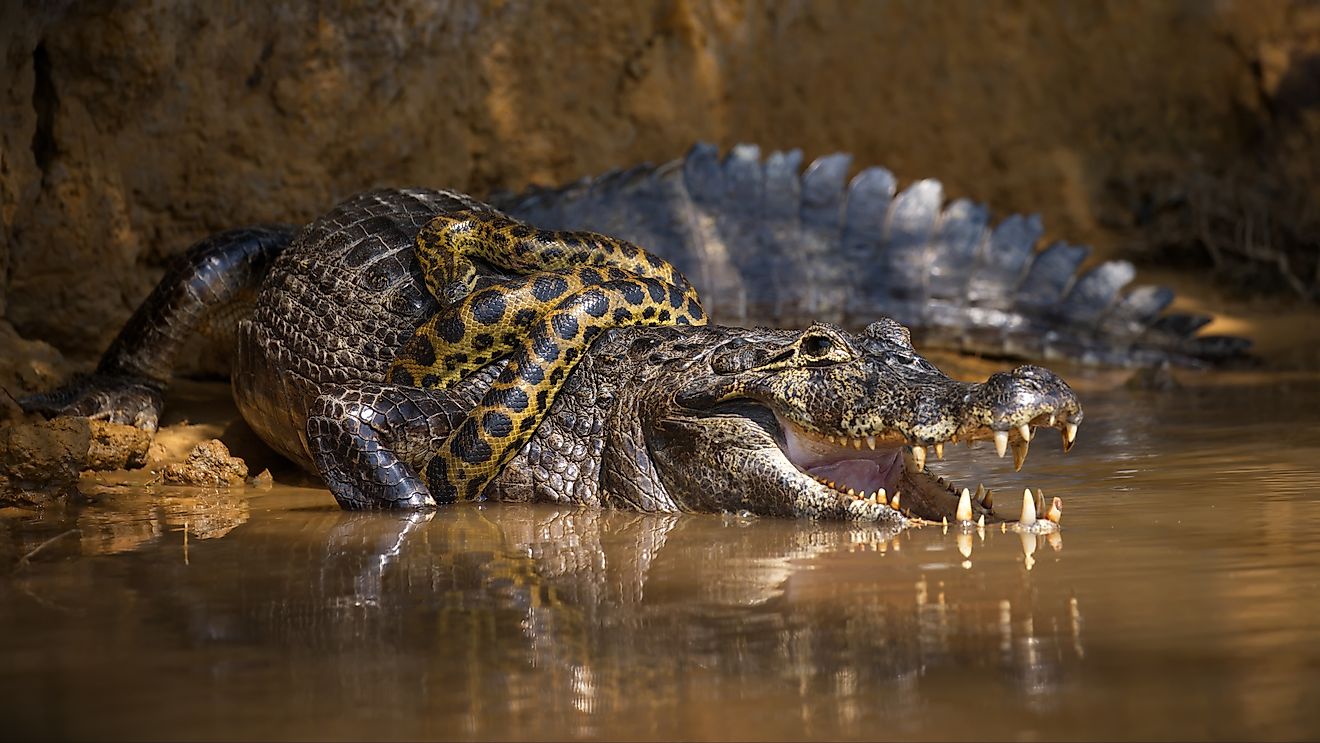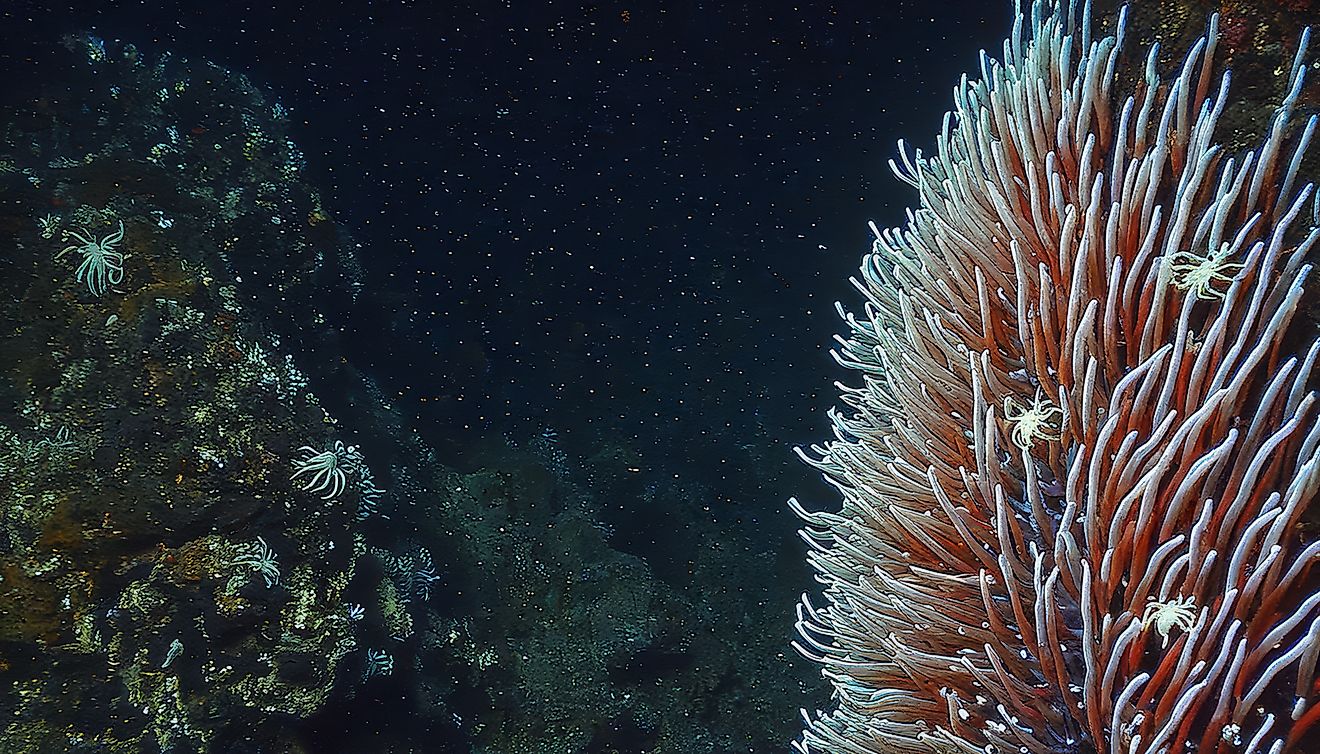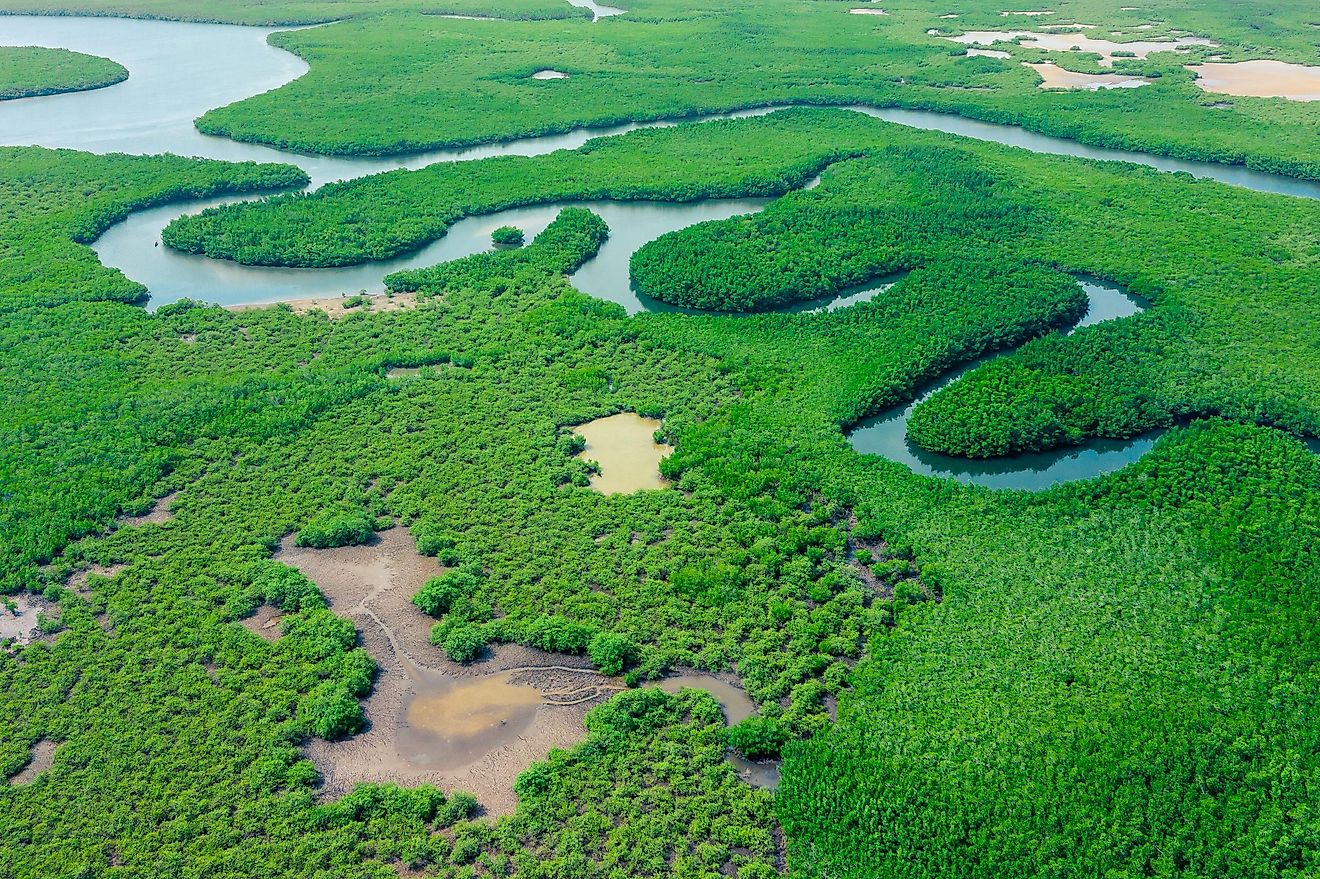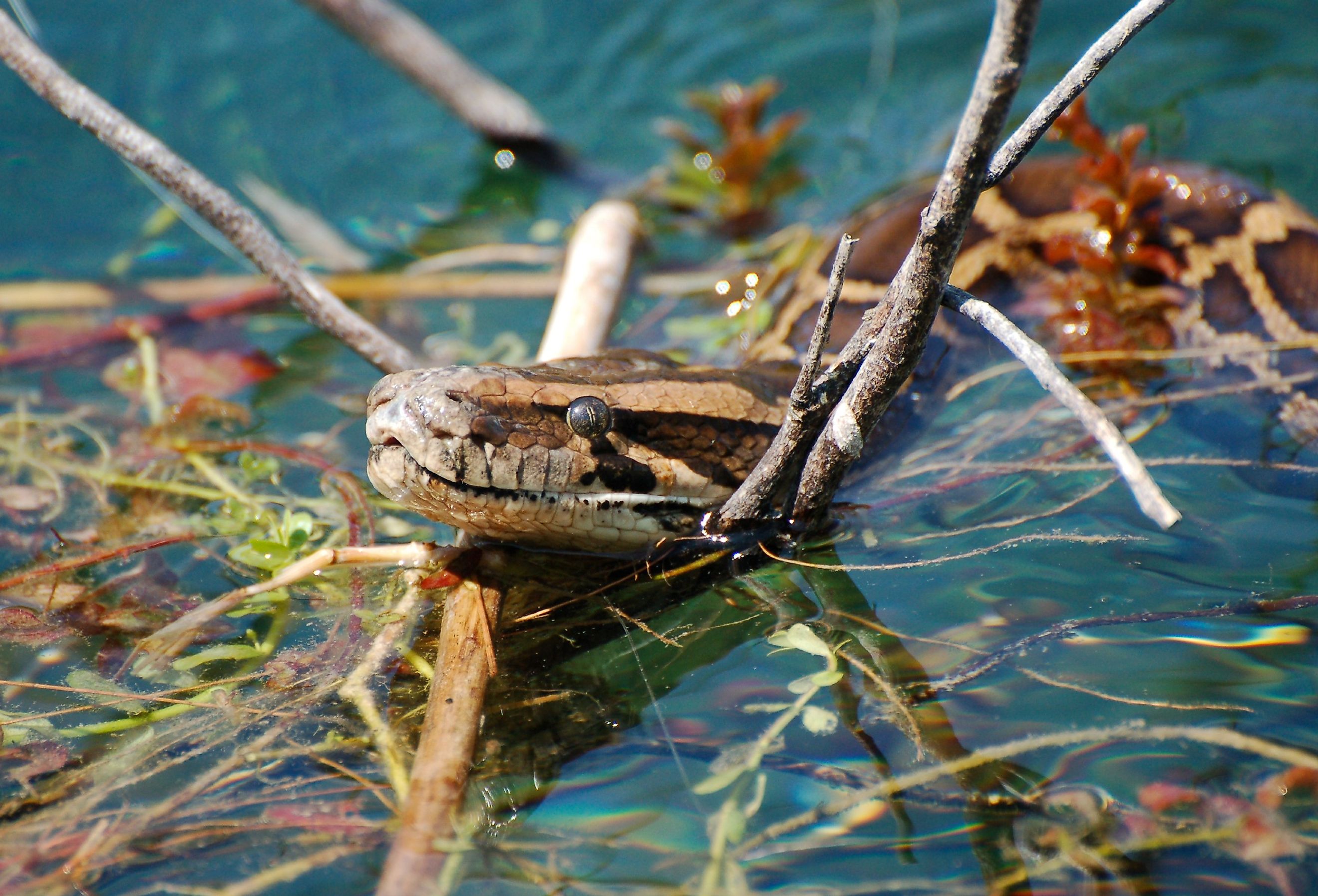
How Many Pythons Are In The Everglades?
One of the world's largest constrictor snakes has established absolute dominance in the Florida Everglades. While it is classified as vulnerable in its native habitat of Burma and other parts of Southeast Asia, the Burmese Python (Python molurus bivittatus) is reproducing at overwhelming rates in Southern Florida. The first invasive specimen was removed in 1979, and since then, the population has ballooned uncontrollably, suffocating the unique ecosystem as a result.
While their direct threat to humans is negligible, Burmese pythons are wiping out already struggling species of mammals and birds, and they are strong-arming the other large predators in the region out of their much-needed food sources. Wade into the swamp and unpack this bizarre situation. How many pythons are in Florida's Everglades? How did they get there? And what, if anything, can be done about it?
Burmese Pythons in the Everglades
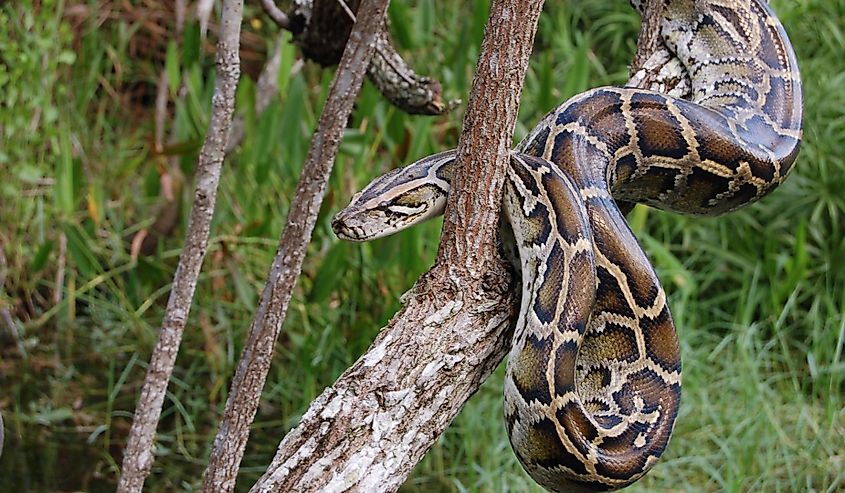
Burmese pythons were first introduced into the Florida Everglades due to a combination of accidental and intentional releases. Both scenarios resulted from the exotic pet boom that began in the 1980s. Although it is now illegal to own pythons as pets in Florida, between 1996 and 2006, as many as 100,000 baby Burmese pythons were imported into the United States, with Florida being the largest market. Many buyers became overwhelmed when these once-manageable babies grew into massive adults. Burmese pythons can reach lengths of 20 feet, with the largest recorded individual measuring an astonishing 23 feet. With their significant size comes a voracious appetite; a full-grown python can consume prey that is half its size in a single sitting. In the Everglades, this means they can eat various smaller mammals and even whole alligators. In one documented case, a python was found with the remains of three deer in its stomach. It is not surprising that so many of these creatures can escape captivity, and it is even less surprising that many owners abandon them, despite it being illegal to do so.
While the exotic pet trade initiated the invasion, Hurricane Andrew in 1992 greatly increased the gene pool. The Category 5 storm destroyed a local breeding facility, releasing countless more Burmese pythons into the foreign, yet suitable, ecosystem. As apex predators, female pythons lay 50 to 100 eggs each year. Their expert camouflage and the similarity of the Everglades to their native habitat allow the python population to continue spiraling out of control.
Assessing the magnitude of the problem has proven to be very challenging. The Florida Everglades, despite being located within 30 miles of one of the country's largest cities, Miami, lack significant infrastructure. The swampy terrain is difficult to navigate, and despite the vast area, the snakes are hard to spot. As a result, conducting systematic surveys is nearly impossible. However, hunting statistics, camera traps, modeling, and other tracking methods have provided working estimates, although these can vary widely.
Government and Media Reports
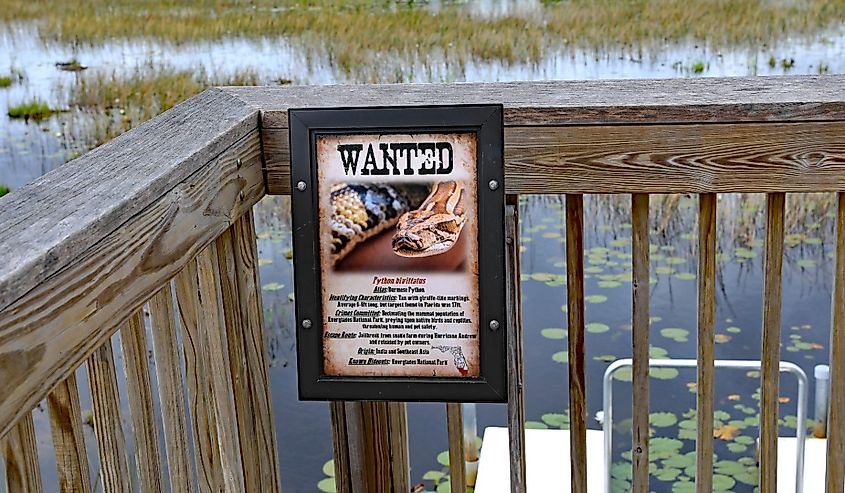
According to the United States Geological Survey (USGS), there are "tens of thousands of invasive Burmese pythons" living in the Everglades. However, the Florida Fish and Wildlife Commission estimates the number to be between 100,000 and 300,000, with the higher figure seeming more likely given that between 18,000 and 19,000 pythons have been removed or killed by hunters and researchers since 2000.
In 2017, the South Florida Water Management District Governing Board implemented the Python Elimination Program. As of June 2023, this initiative has reported the removal of 7,330 pythons, although the Washington Post claims that the number captured under this program is closer to 11,000. Regardless of the exact figures, the USGS has described the python invasion in the Everglades as "one of the most intractable invasive-species management issues across the globe."
Recent media attention has spotlighted the (not-quite) annual Python Challenge, aiming to raise awareness about a problem that affects much of Southern Florida. It is likely that this issue will expand to more areas of the state and potentially even spread to other parts of the Southeastern United States. For now, these large-scale hunts represent the best opportunity for controlling the rapid population growth of pythons. With a $10,000 cash prize awarded to the person who kills the most pythons during this 10-day event in August, there has been a notable surge of enthusiasm for the hunt.
However, even experienced trappers have expressed regret over having to catch and kill such remarkable creatures. There is a general consensus that the pythons must be eliminated; otherwise, they will continue to prey on other animals at alarming rates.
Ecological Impact and Management Efforts

The substantial population of Burmese pythons found in over 1,000 square miles of southern Florida, including all of Everglades National Park and the Big Cypress National Preserve, has severely impacted several key populations of mammals and birds. Species such as white-tailed deer, foxes, bobcats, rabbits, raccoons, and opossums have experienced declines ranging from 88% to over 99%. The dominance of these snakes in the food chain has also affected other large predators, including alligators, which have themselves fallen victim to the larger Burmese pythons, and panthers. Already threatened species, such as the Key Largo woodrat, wood stork, and nesting colonies of wading birds—including the limpkin, roseate spoonbill, great egret, and snowy egret—have also suffered due to the python invasion. Additionally, the increasing presence of these Southeast Asian constrictors has led to the spread of diseases among native snake populations.
The Python Elimination Program is expanding its reach, now covering Monroe, Miami-Dade, Broward, Collier, Hendry, Lee, and Palm Beach counties and actively seeking new participants to meet the rising demand. Since humanely removing the snakes is the most effective solution, the publicity generated by the Python Challenge has become significant. In 2023, the winner, Paul Hobbs, captured 20 pythons (out of a total of 209 removed), earning a $10,000 grand prize. Furthermore, the state has eliminated most regulations to encourage everyday citizens to join the effort; a hunting license is not even required on private land.
However, mass killing is not the only approach being developed. Researchers have started tagging large male pythons with radio transmitters to locate breeding females, which are the primary target for population control. There are also hopes that gene manipulation and pheromone strategies may help curb the expansion of the population. Despite these measures, given that Burmese pythons have established a significant breeding population across a large ecosystem, and that females can lay between 50 to 100 eggs per year, total eradication is not seen as a realistic goal.
The cat is out of the bag, or rather, the python is out of its cage, and there is no getting it back in. The case of the Burmese python invasion of the Florida Everglades is a cautionary tale of just how out of control exotic populations can get in new viable environments. As is always the case with invasive species, prevention is vital. As of 2010, pet pythons are no longer permitted in Florida, but anyone with an unusual pet that they are no longer able to care for is asked to utilize the Florida Fish and Wildlife's Exotic Pet Amnesty Program. Furthermore, if you happen to spot an animal or plant that looks out of place (i.e., invasive), especially a python, report it immediately using the IveGot1 website, app, or hotline (1-888-IVE-GOT1).

